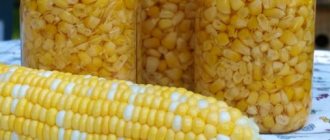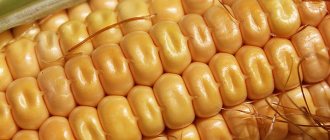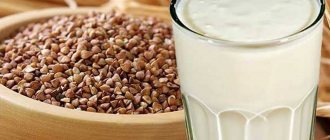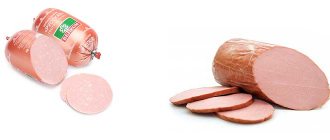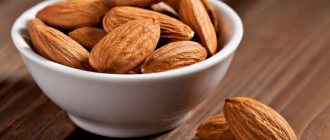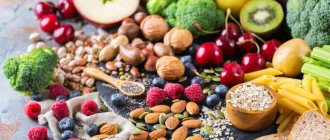Chemical composition and nutritional value of buckwheat
Buckwheat is rich in minerals. Potassium, magnesium, manganese, copper, phosphorus in boiled buckwheat are well absorbed because there is little phytic acid in the cereal grain:
- Potassium - 100 g of product contains 12.8% of the daily requirement. Normalizes blood pressure and regulates the functioning of the heart muscle.
- Magnesium - 37.5%. Regular consumption of buckwheat porridge normalizes sleep, relieves stress, and helps fight depression.
- Manganese - 50%. Normalizes metabolism in the body.
- Copper - 36%. Promotes collagen formation, iron absorption and plays an important role in energy production.
- Phosphorus - 30%. Participates in metabolic processes and bone tissue formation. However, excessive consumption of buckwheat, especially with a mono-diet, is fraught with the deposition of phosphorus in the bones to the detriment of calcium. This leads to their fragility. Therefore, it is important to combine buckwheat dishes with foods rich in calcium.
Cereals contain vitamins . Chief among them:
- Rutin - 30% of the norm. The main storage of rutin is the shell of grains, in which its amount is 17 times greater than the content in the kernel. Improves blood circulation, blood lipid profile, prevents the formation of blood clots, reduces capillary permeability.
- Thiamine - 28%. Improves energy and carbohydrate metabolism in the body. However, in porridge its content is much less. There is only one way out: do not cook, but steam the cereal.
- Vitamin E, or tocopherol , - 44%. Antioxidant, improves immunity, participates in collagen synthesis.
- Nicotinic acid - 30%. Actively participates in redox processes, promotes tissue growth, stimulates the production of hormones, improves the functioning of the gastrointestinal tract, and prevents migraines.
Interesting things on the site:
Which is healthier: buckwheat, lentils or oatmeal?
Colon cleansing with buckwheat and kefir
What is the glycemic index of buckwheat?
Calorie content, dietary fat and glycemic index
The calorie content of buckwheat is about 308 kcal per 100 g of product , which is 20% of the daily value:
- Proteins - 10-12%. High-quality, balanced in amino acids, rich in essential lysine and arginine. In animals, buckwheat protein has been shown to be effective in lowering blood cholesterol, inhibiting the formation of gallstones, and reducing the risk of colon cancer.
- Fats - 3.0-3.5%. Such a low amount allows the cereal to be used as a dietary product.
- Buckwheat consists mainly of complex carbohydrates - up to 60%. It has a low glycemic index (50-60), which eliminates sudden surges in blood sugar and ensures a feeling of fullness for a long time.
Products containing fiber
Everyone knows that fiber is healthy, cleanses the body, and supplies vitamins. Everyone knows that fiber and water are the first remedies in the fight against constipation. Products containing fiber provide a long-lasting feeling of satiety and normalize appetite, and are also a good prevention of hemorrhoids and some types of intestinal cancer. You can get fiber from special supplements, or from foods. Fiber tastes better as part of regular food, you don’t need to add it specially, and you don’t have to spend extra money on it. Let's look at the most affordable products containing fiber.
Fiber is the non-digestible dietary fiber found in the edible part of plants. They are indigestible because human digestive enzymes cannot digest them. However, bacteria living in the large intestine use fiber as a nutrient substrate. They break it down into simple substances (short-chain fatty acids). Thus, fiber digested by bacteria serves as an additional source of fatty acids for humans.
Edible parts of plants
Fiber can be soluble (water) and insoluble. Insoluble, most often, is found in the outer shells (skin), and soluble in the inner parts (pulp).
Nutritionists recommend consuming about 40 grams of fiber for men and 25 for women under the age of 50. Older people need slightly less fiber. The maximum dose of dietary fiber that can be consumed without harm to human health is 60 grams.
It is important to remember that many industrially processed foods lose a significant amount of fiber. That is why one of the conditions for the usefulness of the product is minimal industrial processing.
The basis of human nutrition in our culture is cereals and products made from them. By choosing whole grain cereals and breads, you can significantly enrich your diet with dietary fiber.
Of course, bran is the leader in fiber content. Actually, it is in the shell of cereals, fruits and vegetables that the concentration of insoluble fiber is maximum. Bran is precisely the shell that was removed from the grain during industrial processing. It is best to obtain bran as part of whole grain products.
Then come sources such as beans and legumes, whole grains, vegetables, berries and fruits.
Soluble fiber can be found in
- flax seeds
- oat bran
- plantain seeds
- Quince
- beets
- pumpkin
- eggplants
- carrots
- black and red currants
- gooseberries
- plums
- apples
- edible seaweed
The best sources of insoluble fiber are:
- beans and legumes
- whole grains and products made from them¹
- popcorn
- green vegetables (rhubarb, green beans, celery leaves and roots, Brussels and Chinese sprouts, white and cauliflower)
- eggplant, pumpkin
- root vegetables (with peel)
- mushrooms
- fruits
¹Choosing dark-colored bread can significantly increase your daily fiber intake
For greater clarity, a table has been prepared that contains a list of the most popular food sources of fiber. The table is sorted by the last column, which indicates the amount of fiber in grams per 100 kilocalories of the product. This makes it easier to plan your diet. The fiber concentration should be approximately 14 grams per 1000 kilocalories.
| Product name | Kcal/100g | Fiber (gram) Per 100 grams of product | Fiber (grams) Per 100 kcal |
| Rhubarb | 16 | 3,2 | 20,0 |
| Bean pod | 23 | 3,4 | 14,8 |
| Leaf celery | 13 | 1,8 | 13,8 |
| Brussels sprouts | 35 | 4,2 | 12,0 |
| Black currant | 44 | 4,8 | 10,9 |
| Eggplant | 24 | 2,5 | 10,4 |
| Fresh green peas | 55 | 5,5 | 10,0 |
| Champignon | 27 | 2,6 | 9,6 |
| Celery (root) | 34 | 3,1 | 9,1 |
| Pumpkin | 22 | 2 | 9,1 |
| Kiwi | 47 | 3,8 | 8,1 |
| Raspberries | 46 | 3,7 | 8,0 |
| Radish | 20 | 1,6 | 8,0 |
| Broccoli | 34 | 2,6 | 7,6 |
| Gooseberry | 45 | 3,4 | 7,6 |
| Quince | 48 | 3,6 | 7,5 |
| Cabbage | 16 | 1,2 | 7,5 |
| Salad | 16 | 1,2 | 7,5 |
| Jerusalem artichoke | 61 | 4,5 | 7,4 |
| Bulb onions | 41 | 3 | 7,3 |
| Red cabbage | 26 | >1,9 | 7,3 |
| Sweet pepper | 26 | 1,9 | 7,3 |
| White cabbage | 28 | 2 | 7,1 |
| Ground cucumber | 14 | 1 | 7,1 |
| Asparagus | 21 | 1,5 | 7,1 |
| Dried figs | 257 | 18,2 | 7,1 |
| Cauliflower | 30 | 2,1 | 7,0 |
| Dill | 40 | 2,8 | 7,0 |
| Carrot | 35 | 2,4 | 6,9 |
| Cucumber, greenhouse | 11 | 0,7 | 6,4 |
| Leek | 36 | 2,2 | 6,1 |
| Green onion (feather) | 20 | 1,2 | 6,0 |
| Pear | 47 | 2,8 | 6,0 |
| Beet | 42 | 2,5 | 6,0 |
| Rye grain | 283 | 16,7 | 5,9 |
| Lemon | 34 | 2 | 5,9 |
| Black radish | 36 | 2,1 | 5,8 |
| Spinach | 23 | 1,3 | 5,7 |
| Sorrel | 22 | 1,2 | 5,5 |
| Strawberries (garden), strawberries | 41 | 2,2 | 5,4 |
| Oyster mushroom | 43 | 2,3 | 5,3 |
| Cherry plum | 34 | 1,8 | 5,3 |
| Sweet red pepper | 26,6 | 1,4 | 5,3 |
| Orange | 43 | 2,2 | 5,1 |
| Flax seeds | 534 | 27,3 | 5,1 |
| Barley grain | 288 | 14,5 | 5,0 |
| Mandarin | 38 | 1,9 | 5,0 |
| Apricots | 44 | 2,1 | 4,8 |
| Buckwheat | 296 | 14 | 4,7 |
| Peach | 45 | 2,1 | 4,7 |
| White mushroom raw | 22 | 1 | 4,5 |
| Parsley | 49 | 2,1 | 4,3 |
| Avocado | 160 | 6,7 | 4,2 |
| Zucchini | 24 | 1 | 4,2 |
| Beans, grain | 298 | 12,4 | 4,2 |
| Ukrainian bread | 198 | 8 | 4,0 |
| Tomatoes | 19,9 | 0,8 | 4,0 |
| Borodino bread | 201 | 7,9 | 3,9 |
| Shitake mushroom dried | 295 | 11,5 | 3,9 |
| Lentils, grain | 295 | 11,5 | 3,9 |
| Apples | 47 | 1,8 | 3,8 |
| Oats | 316 | 12 | 3,8 |
| Peas, grain | 298 | 11,2 | 3,8 |
| Durum wheat grain | 304 | 11,3 | 3,7 |
| Soybean, grain | 364 | 13,5 | 3,7 |
| Turn | 54 | 2 | 3,7 |
| Mash | 300 | 11,1 | 3,7 |
| Soft wheat grain | 305 | 10,8 | 3,5 |
| Cherry | 52 | 1,8 | 3,5 |
| Whole grain bread | 342 | 11,4 | 3,3 |
| Chickpeas | 309 | 9,9 | 3,2 |
| Rice | 303 | 9,7 | 3,2 |
| Doctor's bread | 242 | 7,5 | 3,1 |
| Plum (garden) | 49 | 1,5 | 3,1 |
| Cheremsha | 34,9 | 1 | 2,9 |
| Grain bread | 228 | 6,1 | 2,7 |
| Melon | 35 | 0,9 | 2,6 |
| Boiled sweet corn | 96 | 2,4 | 2,5 |
| Persimmon | 67 | 1,6 | 2,4 |
| Grape | 72 | 1,6 | 2,2 |
| Cherries | 52 | 1,1 | 2,1 |
| Dates | 292 | 6 | 2,1 |
| Oregano | 24,8 | 0,5 | 2,0 |
| Coriander | 24,8 | 0,5 | 2,0 |
| Early nettle | 24,8 | 0,5 | 2,0 |
| A pineapple | 52 | 1 | 1,9 |
| Potato | 77 | 1,4 | 1,8 |
| Beet tops | 28,2 | 0,5 | 1,8 |
| Savoy cabbage | 28,2 | 0,5 | 1,8 |
| Banana | 96 | 1,7 | 1,8 |
| Watermelon | 27 | 0,4 | 1,5 |
| Simple bagels | 311 | 4,6 | 1,5 |
| Sliced loaf | 259 | 3,2 | 1,2 |
| Wheat bread, tin | 235 | 2,6 | 1,1 |
| Sorghum | 323 | 3,5 | 1,1 |
| Sweet straw | 372 | 4 | 1,1 |
| Simple dryers | 339 | 3,6 | 1,1 |
| Garlic bulb | 149 | 1,5 | 1,0 |
| City rolls | 265 | 2,6 | 1,0 |
| Bran crackers | 416 | 4 | 1,0 |
| Corn, canned food | 58 | 0,5 | 0,9 |
| Cream crackers | 399 | 2,8 | 0,7 |
Products that are often on our table and are the main suppliers of fiber for the family are highlighted in bold.
Based on the table, you can also choose the most suitable source of fiber products for you.
Thanks for sharing the article on social media. All the best!
Sincerely, Elena Dyachenko
Share:
How much fiber is in boiled buckwheat?
Fiber makes up 2.7% of the weight of cooked cereals and is primarily composed of cellulose and lignin . Fiber is concentrated in the husks that cover the grain. The grain shell also contains digestion-resistant starch, which is classified as fiber.
The benefits of fiber for the human body
Fiber is complex carbohydrates that cannot be digested in the stomach . However, they play an important role in the digestion process. Fiber can be water-soluble or insoluble.
Soluble fibers (tar, hemicellulose, pectin and alginase) are found in seaweed, fruits, legumes, oats, and barley. Their main function is to normalize the intestinal microflora. Dissolving in water, they turn into a jelly-like mass, which serves as a haven for beneficial bacteria.
Insoluble fibers (lignin, cellulose) swell in water and partially dissolve. It is important to drink plenty of water when using them.
Lack of dietary fiber leads to:
- to an increase in blood glucose;
- constant feeling of hunger.
Fiber has a variety of effects on the body:
- Facilitates the movement of food through the intestines. The fibers form a “food lump” that the intestinal walls easily push forward.
- Prevents the formation of constipation, which leads to stagnation of blood in the veins of the pelvic area. And this is the cause of hemorrhoids. Constipation provokes intoxication of the body, stretches the walls of the large intestine, which affects the functioning of other digestive organs.
- Reduces the level of bad cholesterol in the blood, prevents the development of atherosclerosis.
- Improves immunity thanks to beneficial bacteria. They produce fatty acids that feed the cells lining the colon. The result is improved gut health and a reduced risk of colon cancer.
Summarize
- Carrots are the perfect crunchy, delicious snack that is rich in nutrients and low in calories.
- Eating this vegetable has been linked to a variety of benefits in terms of heart and eye health, improved digestion, and a reduced risk of cancer.
- There are several types of carrots in different colors, sizes and shapes that are a great addition to a healthy diet.
The article was prepared by experts for informational purposes only. It should not be used as a guide for treating medical conditions and is not a substitute for professional medical advice, diagnosis, or treatment. In case of illness or any symptoms, you should always consult a doctor and not self-medicate.
Tags: Carrot
About the author: Alexander Fedorov
Candidate of Biological Sciences, biologist, nutrition expert. Graduated from Stavropol State University with a degree in Biology at the Faculty of Biology and Chemistry.
- Related Posts
- Are purple carrots healthy? Composition, benefits and application
- Sauerkraut: benefits and harm to the body
- 7 Health Benefits of Red Lettuce
« Previous entry
Fiber intake standards
For the proper functioning of the body, a person should consume 25-30 g of fiber per day . For people engaged in heavy physical labor and athletes - up to 40 years.
Most people in the world consume no more than 20 grams of fiber per day.
The required amount of fiber can be obtained from regular food, without resorting to the use of dietary supplements and other expensive “fiber-enriched” products. For this:
- the diet includes buckwheat, oatmeal, and legumes;
- replace products containing simple carbohydrates (sugar, baked goods made from premium flour) with complex ones (bread made from wholemeal flour, pasta made from durum wheat);
- Prepare potatoes in their skins.
Nutritionists advise eating at least 5 different vegetables and fruits per day.
